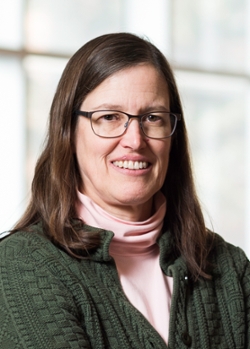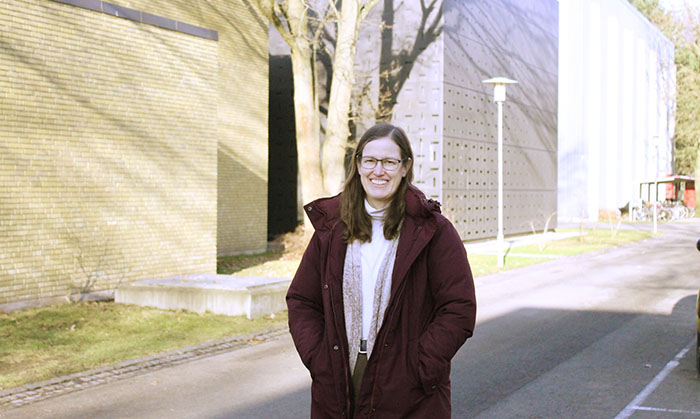News
Professor Laurel Carney delivers seminar titled, "Speech coding in the auditory system: the "view" from the midbrain," at Danish Technical University
Thursday, April 20, 2017

Mary Lou Ingram Professor in Biomedical Engineering Laurel Carney recently delivered a seminar at the Hearing Systems, Electrical Engineering, Danish Technical University, where she is currently a visiting professor. The seminar was titled, "Speech coding in the auditory system: the 'view' from the midbrain."
Abstract:
Most studies of speech coding in the auditory nervous system have focused on how the spectrum of speech sounds is coded in the responses of auditory-nerve fibers. The limited dynamic range of the auditory-nerve discharge rates poses a challenge for the coding of the sound spectrum, motivating the investigation of temporal aspects of the neural responses. These investigations have Mainly focused on the detailed "fine structure" of phase-locked responses; however, the temporal fine-structure information is lost along the ascending auditory pathway. We will instead focus on the neural representation of Lower-frequency Fluctuations, related to F0 and Spectra Slopes (for unvoiced sounds.) Neurons in the auditory midbrain are very sensitive to Fluctuations in the frequency range of voice pitch, setting up a robust entertainment speech sounds, in quiet and in noisy backgrounds. Consideration of the response properties of These midbrain neurons from a higher vantage point on the ascending auditory pathway Provides New Insight Into the neural representation of speech and the Patterns That are provided as inputs to the forebrain.
Professor Laurel Carney is a visiting professor at Hearing Systems, DTU Electrical Engineering (Technical University of Denmark)
Wednesday, March 1, 2017

Laurel Carney at DTU in Denmark
Laurel Carney, Marylou Ingram Professor in Biomedical Engineering, University of Rochester, New York, is currently a visiting professor at Hearing Systems, DTU Electrical Engineering. Professor Carney's combined expertise in physiology, behavioral research and computer modeling gives new dimensions to hearing research.
In order to reach the research area which occupies Laurel Carney, acclaimed Professor in Biomedical
Engineering, you’ll have to go past the auditory canal, the eardrum and beyond the cochlea into the
midbrain. Laurel Carney focuses on the complex network of nerve
fibers further into the auditory system than the auditory nerve, and how
important the neural responses are for transmitting the inner ear’s signals to the
brain. Her research combines neurophysiological and behavioral studies with computer modeling in an effort
to develop hearing aids that make human speech clearer.
As a part of a one year
Fellowship from her University, Laurel Carney is staying in Denmark for half a year. In the autumn 2016 she
was at the University of Oldenburg, the Department of Neuroscience, working with Professor George Klump, and
now she will stay for the spring in Denmark. In this way, she will be able to immerse herself in two of the
main areas of her research, neuroscience and modelling in human hearing.
“The exciting thing and really the reason for coming here is that this group has a long history of studying modulations,” she says.
Through computer modeling it is possible to simulate background noise, different degrees of hearing loss,
read the changes and decode the neural information in response to sound fluctuations. This work may be
important for the development of hearing aids for listening in background
noise. Her research group in Rochester makes recordings of how the neurons
respond to sounds, and the scientists are actually able to compare the detection patterns from parakeets to
their behavior. Then they can compare behavioral abilities of parakeets and humans. In this way they hope to
find out how the neurons in the brain are coding sound.
“We try to learn about the bird brain's strategy for discriminating complex sounds, and we believe it must be comparable to the human strategy, humans and some birds listening behavior are so similar. Timing in background noise is important to understand and we need to understand how hearing loss would affect that timing,” she explains.
Torsten Dau, Professor and Head of Hearing Systems, is very pleased to have Professor Carney, who is acknowledged worldwide, as Visiting Professor in the research group. “Laurel Carney's expertise in physiology, behavioral research and computer modeling makes it exciting to work with her and we are proud to have her here as a Guest Professor,” he stresses.